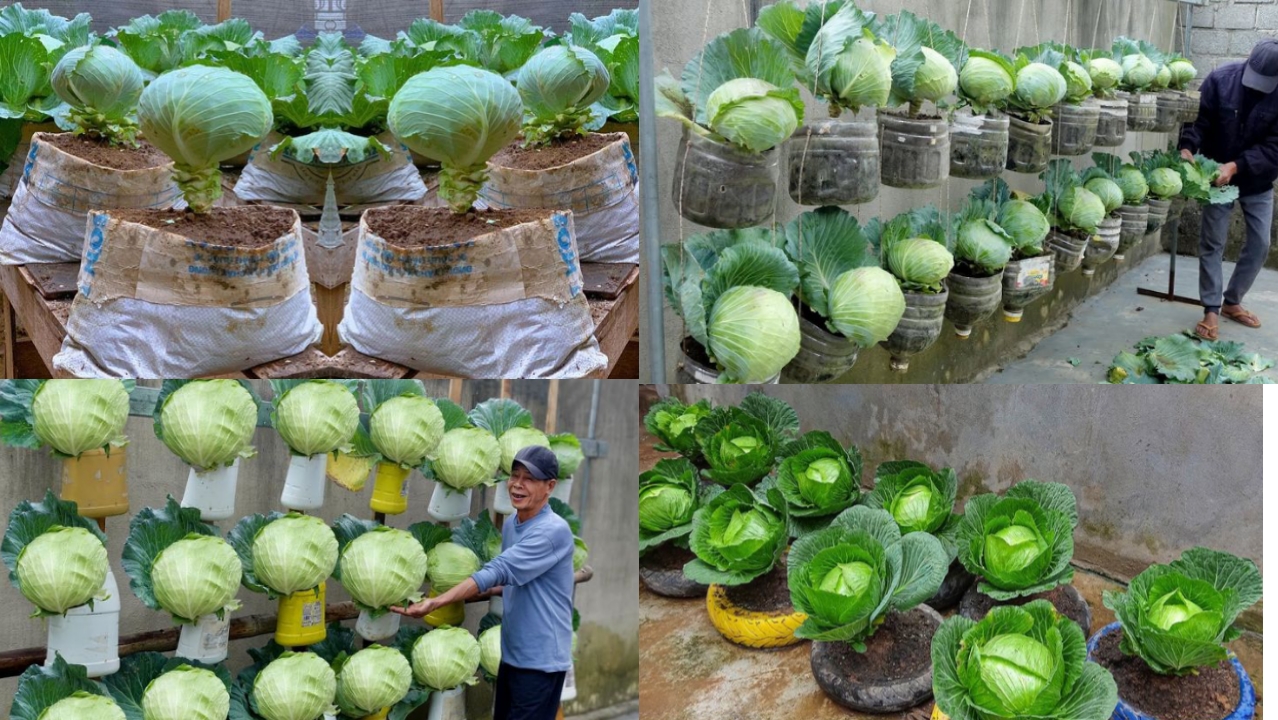Growing Cabbage in Reused Containers: A Guide to Bountiful Harvests Introduction Gardening has become much more easier and simplified task ...
Growing Cabbage in Reused Containers: A Guide to Bountiful Harvests
Introduction
Gardening has become much more easier and simplified task like never before. Having either short spaces or wanting to give a try to newly developed system of planting, one can generate massive income by simply growing Cabbages in plastic bottles. Additional advantage is that Cabbages are not restricted to single weather planting. In this article i will guide you on how to successfully grow Cabbages at home through the use of plastic bottles, i will try as much as possible to simplify the steps for easy understanding. Alright let's dive in!
Choose the Right Container
When selecting containers for cabbage, large plastic bottles will make an excellent eco-friendly choice. Which is readily available and at the same time affordable. Bottles are okay to be reused for gardening. Here's what you'll need:
1. Containers:
- Large plastic bottles 2 liters or more capacity when tops are removed
- Ensure that the containers are clean thoroughly and drainage holes are added to prevent too much water retention.
2. Potting Mix:
- Use a well-draining, nutrient-rich mix containing organic materials
- Go for commercial mixes or a homemade blend of compost, peat moss and perlite
3. Seedlings:
- Source young cabbage plants from a reputable nursery
- Alternatively, start seeds indoors a few weeks before transplanting outside.
Step-by-Step Growing Procedures:
1. Prepare Containers:
- Clean bottles and remove tops
- Add drainage holes to bottle bottoms
2. Fill with Potting Mix:
- Pack soil two-thirds full and tamp down to remove air pockets
3. Plant Seedlings:
- Dig holes deep enough for root balls
- Gently pack soil around roots to secure seedlings
4. Provide Care:
- Place in area with six and more hours sunlight
- Water regularly to keep soil moist but not soggy
- Consider mulch to retain moisture and prevent weeds
5. Fertilization:
- Use balanced liquid fertilizer every 2-3 weeks
- Or incorporate slow-release pellets into soil initially
6. Pest/Disease Management:
- Monitor for common issues and use organic controls if needed
- Maintain airflow around plants
7. Harvesting:
- Cut heads above soil level when firm and desired size are obtained.
I hope you find this article helpful, thanks for reading.










No comments